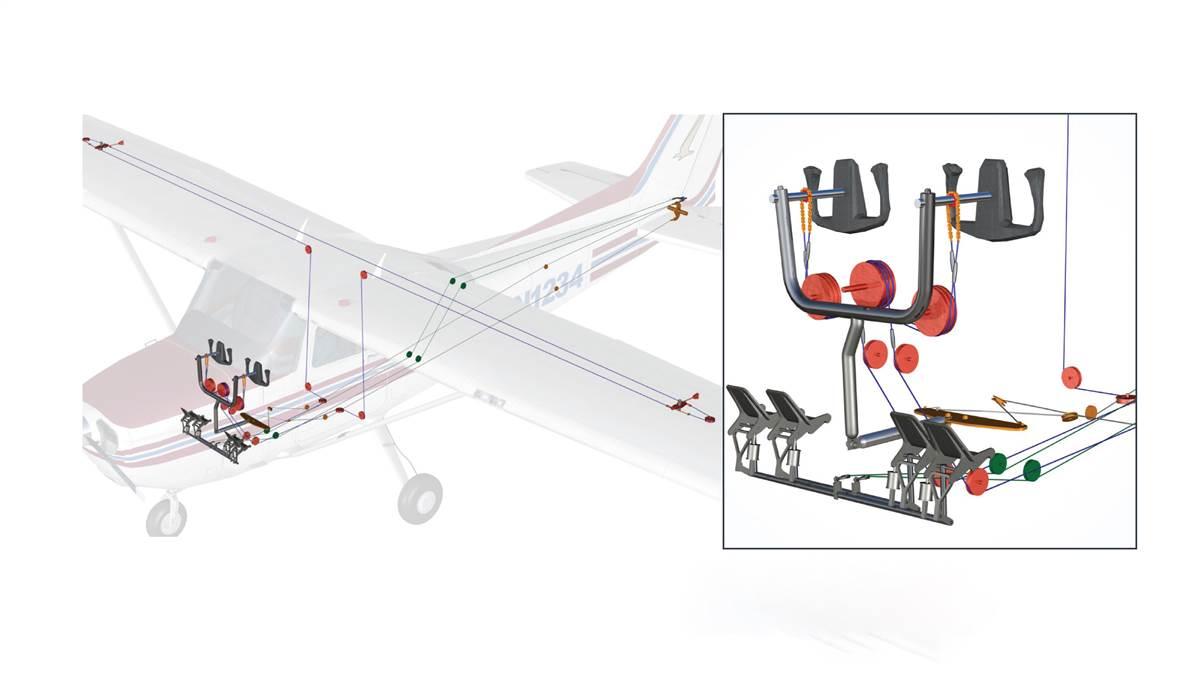
Turn left or right on the yoke and the ailerons move. Pull back on the stick and the elevator deflects up. But how? Roll, pitch, and yaw are easily understood, but how those control surfaces move isn’t. Different airplanes have different solutions, but almost all of them fall into three categories—cable and pulley, pushrod, or electronic.
Cessna’s 152 and 172 use a cable and pulley system for all three control surfaces. Both yokes are attached to a “Y” column behind the panel. When the pilot rotates the yoke, a sprocket rotates, setting off a series of movements down the length of the steel or stainless steel cable. Each time a bend in the system is required, it’s routed through a pulley—a grooved disc that rotates on a shaft often bolted directly to the airframe. Just short of the aileron or rudder is a bellcrank, which converts the movement from a cable to the metal rod that articulates the aileron. The rudder and elevator trim are also cable-driven. These systems are light; the cables can take some punishment without failing; and they are thin, so they can squeeze through tight spaces. They do stretch over time and thus require inspection and maintenance.
Pushrods are metal tubes that create a direct mechanical linkage between the control column and the control surfaces. As a result they provide a direct-response feel on the controls, which many pilots prefer. They are also more complicated, and come with lower mechanical tolerances.
Electronic or fly-by-wire systems have grown in acceptance in higher-end business and commercial aviation but remain outside the scope of most recreational flying. These systems transmit pilot control movement into an electric signal that is sent to a control servo, which then moves the control surface. There are numerous benefits to such a system. The biggest is envelope protection, which limits stalls, overspeeds, and other unsafe conditions.



